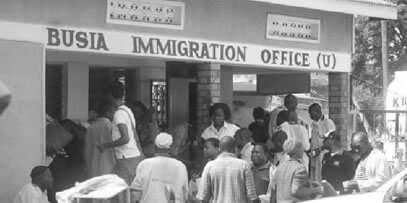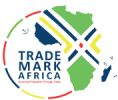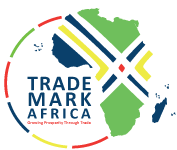It’s a Friday afternoon at Busia border between Uganda and Kenya. Ugandan immigration staffs are busy clearing travellers when a tall young man marches to the counter and demands an entry stamp in his South Sudanese passport.
The immigration officer has a number of queries before he can clear him, and the impatient young man starts getting angry and belligerent. Kenya has cleared his exit and he doesn’t see why the Ugandans should waste his time.
The immigration officers enlist the help of police to overpower the young man and escort him back to the Kenyan side. Ugandan and Kenyan officers examine the case, and compare notes and finally give him clearance to travel to Kampala.
The Ugandan officer in charge of immigration, Margaret Obong, regrets the amount of time lost on such individual cases when immigration officers of both countries walk across to compare notes and meet with their counterparts.
This time-consuming exercise will be dramatically reduced when a One Stop Border Post (OSBP) becomes operational. This innovation is going up in many parts of East Africa to speed human and goods traffic, save time and money, and allows the private sector to generate more money and less paperwork.

With funding from Britain’s development arm DFID, the Dutch, Danish development agency (DANIDA), Sweden development agency (SIDA) and Belgium, TradeMark Africa has helped institute a complete reconfiguration of the border processes including physical construction of the new border stations.
The new Busia border post will integrate the Ugandan and Kenyan operations at a cost of about $7million and will see the construction of modern joint facilities, training of staff in modern procedures and the installation of an integrated IT system that will connect the various agencies at the border. Building is expected to start this year and will last some 18 months.
Margaret’s office registers a minimum of 1,000 entries and about an equal number of exits everyday in the low season. But on busy days, such as when schools are opening or closing, the numbers go to 1,500 in either direction.
Usually, three quarters of the people crossing at Busia are Kenyans. The remainder is other East Africans, Ugandans and citizens of other countries. Margaret anticipates a dramatic increase in the efficiency and speed at which her team does their work with the establishment of the OSBP, and other benefits.
“Today we apply different applications of similar laws in the East African countries,” she says. “Our neighbours will learn a lot from the way we handle East African travelers and immigrants in Uganda, and we shall also definitely learn from them.
Next door in her Customs counterpart’s office, I find a Ugandan woman called Zamu Ahmed shedding tears. She has been given a bill of UGX 1.2 million in domestic taxes for a consignment of baking powder bought on the Kenyan side.
She is taking it to Lira in northern Uganda to sell but has run to the office of the top Uganda Revenue Authority supervisor to appeal her case. Zamu’s argument is: “They say goods made from Kenya are zero rated; now why am I paying tax? And at UGX1.2 million, I am losing all my capital, not just profit.”
The supervisor, Alex Rubanga, patiently explains to her the nature and accuracy of the taxes. Zamu is not persuaded and says she can only pay half. But Alex cannot bend the law. Zamu demands that she be allowed to return the good to Kenya and recover her money since she will operate at a loss if she pays sh1.2m.
At that moment, Alex’s cell-phone rings and it is his counterpart from KRA with an urgent matter. The Kenyan has stopped a container said to contain iron ore. Although its papers are in order and cleared by Uganda to exit, he is curious why a lone container of iron ore should get exported to another country, especially as Uganda is not known for iron ore mining. Alex has to rush to Kenya side.
His colleague sees Zamu out of the office and says it is just one of those minor but common incidents which cost officers a lot of time. “Sometimes angry women traders strip before our eyes, but we are not intimidated.”
The point of all the modernization is speedier clearance of goods so it is no surprise that clearing agents are excited about the change. They say the volume of paperwork at present is overwhelming, even though it has been reduced to an average of two pages today from five a few years ago.
Most of them still wonder why a truck weighed at Busia in Kenya suddenly “becomes heavier” when it crosses into Uganda. This is because of two different systems of weighing the vehicles – gross truck weight and axle load.
When the OSBP becomes operational, such confusion will be eliminated because there will be only one weighbridge, and one system of weighing.















